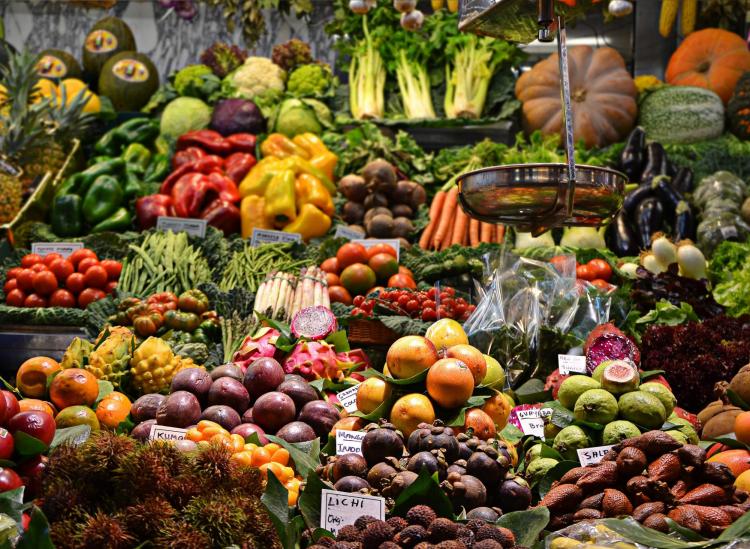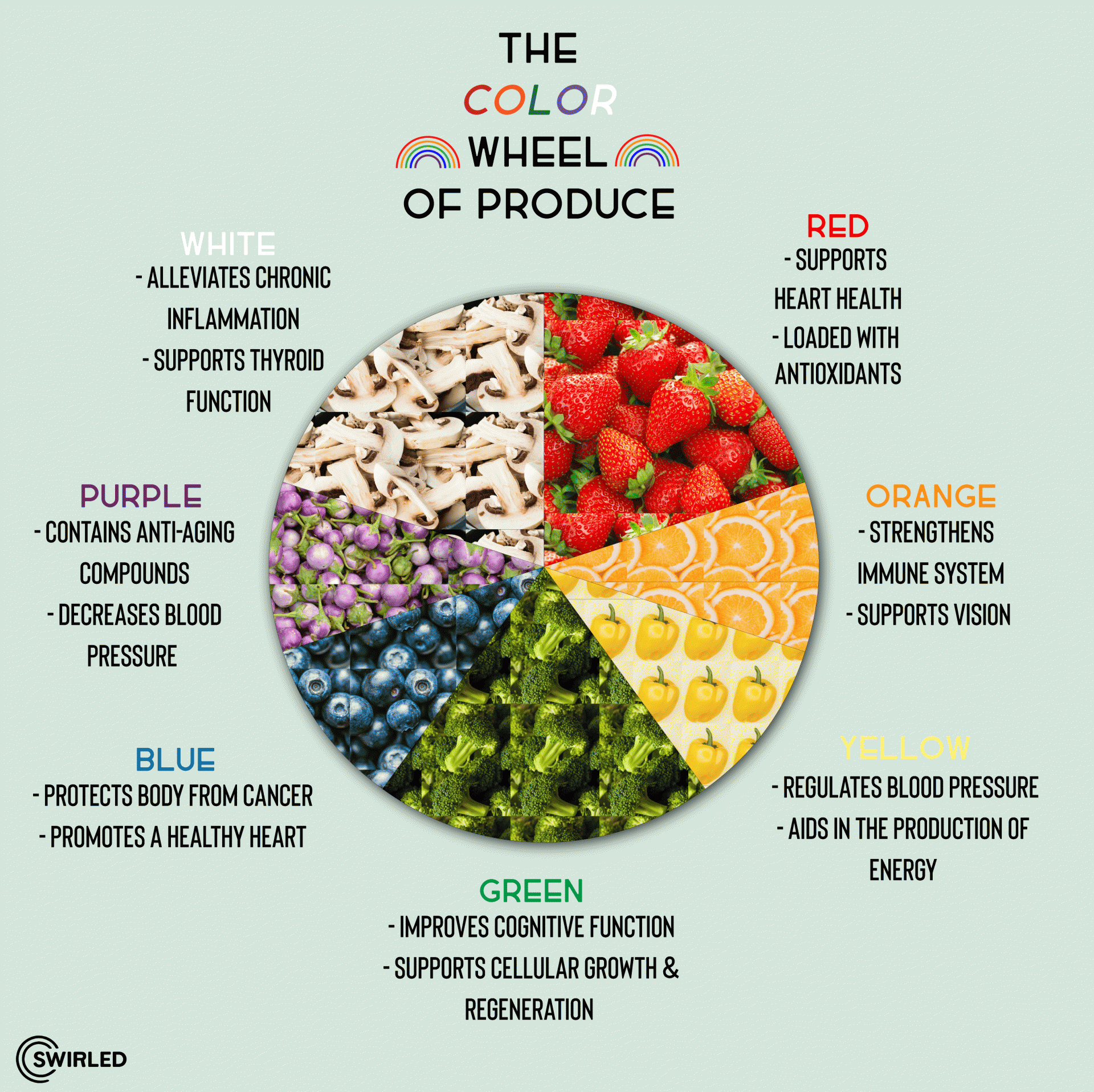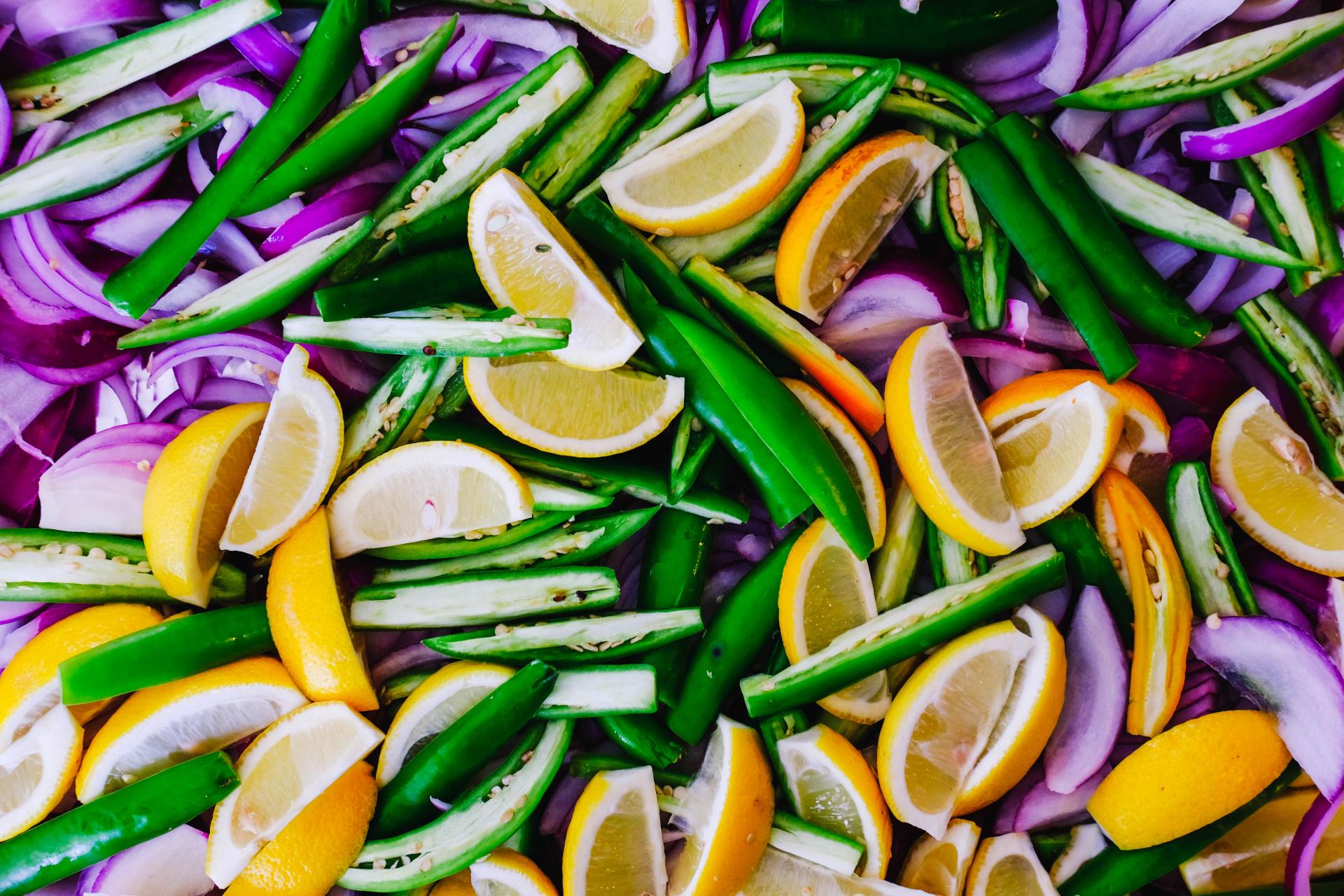What The Colors Of Your Fruits And Veggies Say About Their Nutrient Content

Unsplash/Ja Ma
Many of us have heard the phrase, “Eat the rainbow,” when it comes to our fresh produce, but why is it so important to grab a fruit and veggie from each section of the color wheel?
Well, the hue of the plants you eat is often reflective of the collection of nutrients hidden inside of them, and each color carries with it a variety of health benefits you definitely don’t want to miss out on. So before you head off to the grocery store or your local farmers market, take a look at the color wheel of fruits and vegetables below, as well as the accompanying explanations for each section, to make sure that you’re loading up on all the good stuff your body needs each week.

Swirled / Jenna Sachs
Reds
If wearing red lipstick makes you feel powerful, then just imagine how strong your insides feel after downing a bunch of red produce. Many crimson-colored options like tomatoes, juicy watermelon and red grapefruits are full of lycopene, an important carotenoid that has major antioxidant properties. Other vibrant options like your red bell peppers and seasonal strawberries are loaded with healthy doses of vitamin C. And tasty treats like tart cherries, cranberries, raspberries, rhubarb, pomegranates and beets all have helpful amounts of vitamin A as well. When it comes to produce, seeing red is definitely a good thing.
Oranges and Yellows
We like to think of these fruits and veggies as the sunrises and sunsets of our pretty plates. Their deep, glowing hues signify a hefty amount of vitamin A, vitamin C and potassium, depending on the specific produce you’re eating. Beta-carotene is what colors things like sweet potatoes, pumpkins, carrots and butternut squash, which converts into vitamin A in your body and keeps both your mucous membranes and eyes healthy. Then you have cantaloupes, oranges, orange bell peppers and peaches, which all pack a nice punch of immune-boosting vitamins C and B6. And as you veer into the land of yellow with bananas, summer squash and yellow bell peppers, you stock up on potassium, and the veggies bring you healthy doses of manganese and magnesium, too.
Greens
Ready to be a lean, green fighting machine? This is probably your favorite section of the produce color wheel. And the darker the picks, the richer in nutrients they are. Spinach, collard greens and peas are all great plant-based source of iron, which many of us struggle to get enough of in our daily diets. Green veggies are also the best ways to score eye-healthy lutein — just reach for kale, swiss chard, arugula and Brussels sprouts. What’s more, this section of the produce aisle is loaded with folate, which is critical for cellular growth and regeneration. Load up on dark leafy greens, asparagus, broccoli and avocados, and you’ll be good to go.

Unsplash/Aaina Sharma
Blues and Purples
These cool hues are harder to come by but definitely shouldn’t be overlooked. Blueberries get their color from a powerful antioxidant called anthocyanin, which may help protect your body from cancer and heart disease. Purple produce options, such as blackberries, grapes, currants and plums, are also full of anthocyanin. In the veggie department, pretty purples like radicchio, eggplant, purple cabbage, purple potatoes and purple carrots have healthy doses of flavonoids like resveratrol, which is a trendy anti-aging compound that also helps to decrease your blood pressure.
Whites
While white is often thought of as “the absence of color,” the pale produce category is still worth adding to your weekly shopping basket. Cauliflower and turnips, for example, are loaded with glucosinolates, compounds that could ward off cancer. Bulbous options from the Allium family like onions and garlic are packed with polyphenols that are known to help alleviate chronic inflammation. Plus, mushrooms are great sources of selenium (which protects your body from free-radical damage and keep your thyroid happy) and pantothenic acid (which plays an important role in energy metabolism). And if that’s not enough, turn to your white beans, which are chock-full of protein, B vitamins, potassium and iron.
RELATED
Snag Some Of Your Favorite Produce At The 7 Best Farmers Markets In The U.S.
Here’s The Trick To Decoding Your Produce Labels
How To Keep An Eye On The Pesticides In Your Produce This Year











